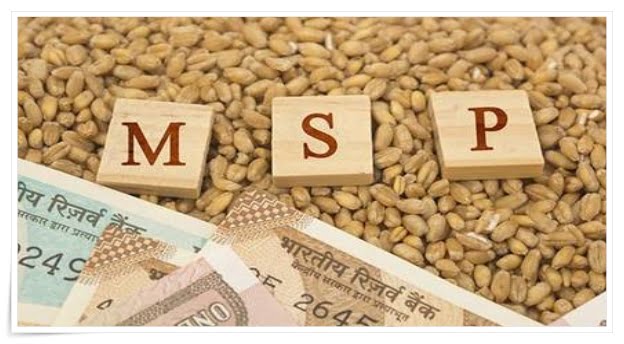2020 was poised to be a landmark year for the global environmental movement. The locus of change was supposed to emerge from the United Nations Climate Change Conference (CoP26), which was expected to reverse the trend of inaction in environmental protection by getting countries to pledge to enhanced emission reduction targets and establish clear frameworks and plans for meeting them. Ironically, this much-awaited (and delayed) meeting of world leaders was shut down by a global pandemic whose roots, we are now told, lie in environmental degradation, particularly dwindling forest cover and industrial agriculture.
But one must be wary before equating 2020 as solely the year of the pandemic. From bushfires in Australia to oil spill in the Arctic to the series of flash floods that ravaged the length and breadth of the Indian subcontinent, a flurry of natural disasters have quietly made their appearance in the background, declaring that climate change is here and now.
The past year has shown us just how vulnerable (in all senses of the term) we are to the effects of crises. Not only did pandemic force the world to its knees, it showed us just how much the effects of any disaster will be disproportionately distributed among the global populace. Nowhere could this be more clearer than in India where tens of millions of ‘impoverished essential workers’, a combination to be found only in our times, were the hardest hit from the ordeal.
But forcing the world to sit at home and question its priorities, it seems, has worked counterproductively. As the world looks to reopen, not by choice but as an inevitable consequence of our economic models which will not allow any break in production, mindfulness and caution will be thrown out of the window.
Countries looking to make up lost money (and time) are already hacking down green barriers and environmental protection laws with increasing ferocity. This trajectory is blatantly obvious in India which unfortunately also happens to be one of the most vulnerable places on earth to the effects of the ecological crisis. Measures to help the country “get back on its feet”, like encouraging greater use of coal, fast-tracked (and often bypassed) environmental clearances and the mindless assault on forests, wetlands and other ecosystems will only serve to ruin us further.
Too little, too late
But despite the extent and seriousness of the crisis, it is staggering how much of humanity and particularly those in power have tended to treat the crisis: unimportant or worse, as non-existent. International negotiations and climate agreements never fail to disappoint. Even if one were to digest the ridiculously conservative estimates and targets set in these pacts, the fact that most are non-binding and do not carry a strong accountability framework demonstrates their seriousness.
Developed countries or those most responsible for the crisis have failed to pay even half of the annual $100 bn pledged for financing climate change adaptation and mitigation projects in developing countries. This is despite the fact most estimates strongly suggest that we will need to pump in at least twice or thrice as much to make a difference.
Time and again, the problem of “too little, too late” has been the norm in international climate agreements. It is then hardly a surprise that we have not met (or close to meeting) even a single target set in the last 30 years and have breached almost every limit set by these agreements
Where do we go from here?
What prevents strong mobilization and action towards fixing climate change and the overall ecological crisis? The opposition to the Green New Deal, a pro-environment legislation in America by the Republican party is a strong indicator of what is to come in the coming years.
Conservative politicians, many of them funded by fossil fuel industries, have gawked at the amount of money required to fix the problems created by these companies in the first place. a climatically unstable world will bring economic damage far worse than the proposed budget. Instead, they have expressed faith in waiting for grand technological solutions that will solve all our problems at the turn of a switch.
Investing or mobilizing to prevent a full-blown crisis does not make “economic sense” to many. In other words, the present course must be maintained for as long as possible since the crisis is inescapable.
The problem, however, is that it imagines climate change as a series of apocalyptic and earth-shattering events that we are so used to seeing in popular fiction and cinema. But instead, the effects of climate change will play out in far more complex and perhaps, insidious ways. Its effects will not just be limited to the natural world but will also produce deep schisms in our everyday political, social and economic lives. Further, it puts the lives of billions, mostly the marginalized and the poor at the greatest risk, not to mention the loss of unimaginable amounts of natural, social and cultural capital. In short, hurtling towards a world where natural systems will be fundamentally altered will prove humanity’s greatest folly.
The proposition that climate change is irreversible will be the biggest fight of the environmental movement in the coming years. This fear is reflected in the choice of theme for Earth Day 2021 – Restore the Earth. It draws attention to the fact that enough and more can (and should) still be done to restore the Earth’s ecological balance. Wilfully (and conveniently) ignoring it is to commit an act of grave injustice towards humanity.
A year to never forget
While 2020 has certainly been a long year, it would be a terrible mistake to forget the things it has taught us. For starters, the pandemic has shown our political and economic priorities for what they are: twisted and skewed towards the elite. The climate change movement is gathering momentum and interest around our impact on the environment is at an all-time high.
Individuals, interest groups, expert coalitions and civil society organizations are finding new ways to think about the crisis, mobilize, generate change and push for sensible, long-term action. Children and young adults, in particular, are finding their voice and seeking answers to difficult questions in order to secure their future. As with any struggle, there are silver linings, albeit small and scattered.
The scope for change is massive, but the window of opportunity is limited. As another round of negotiations begin in November 2021, it is up to us to force action and consequently, ensure that by remembering 2020 we do not ever repeat it.
Picture Credit: bertknot
Rohit is student of history and sociology from Ashoka University. Currently he is a Mother Teresa Fellow and working to be an educator at Pitchandikulam Forest Consultants.
We publish all articles under a Creative Commons Attribution-Noderivatives license. This means any news organisation, blog, website, newspaper or newsletter can republish our pieces for free, provided they attribute the original source (OpenAxis).










